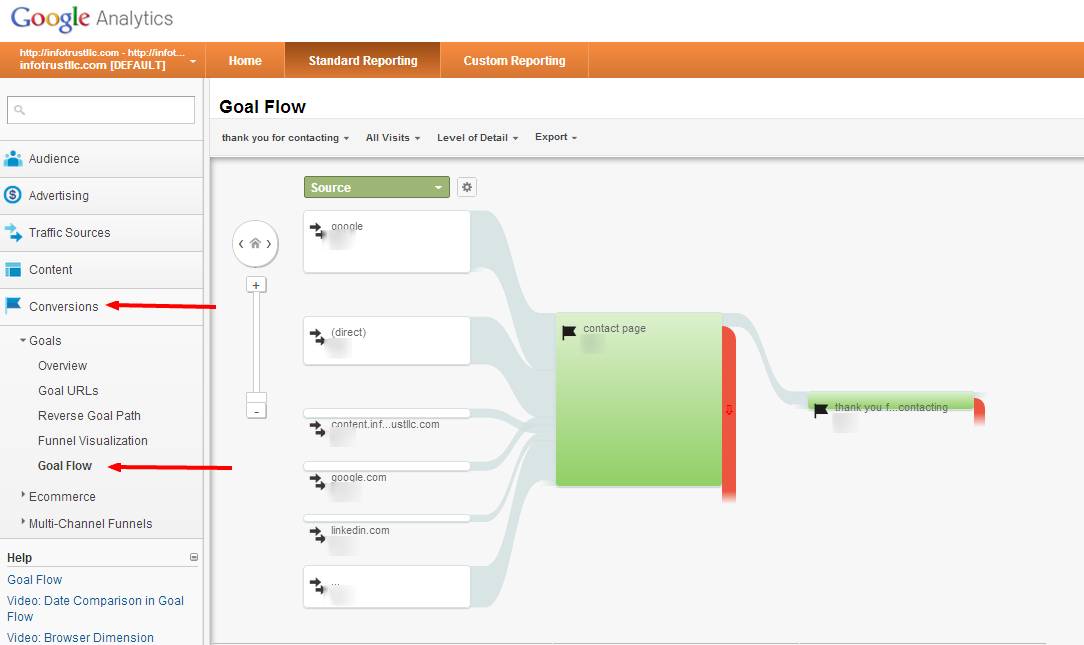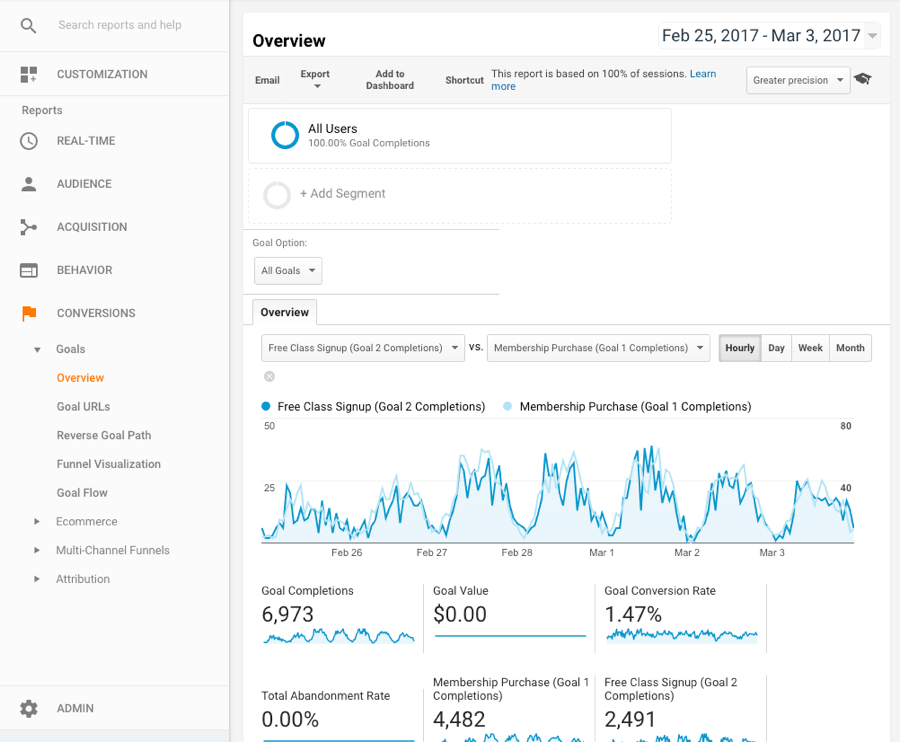What Data Is Google Analytics Goals Unable to Track: Crucial Info
What Data Is Google Analytics Goals Unable to Track: Crucial Info
Blog Article
Debunking Google Analytics Limitations: Reveal What Data Goals Can not Track
In the world of digital analytics, Google Analytics stands as an effective tool that offers important insights right into website performance and customer habits. Amidst its capacities, there exist limitations that often go unnoticed. Comprehending what Google Analytics can not track is vital for a detailed grasp of data interpretation and decision-making processes. From the intricacies of individual communication with dynamic material to the intricacies of cross-device customer journeys, these constraints shed light on locations that might continue to be obscured from standard analytics viewpoints. By deciphering these constraints, a clearer picture arises, enabling more enlightened approaches and improved insights into user interaction and conversions.

Customer Communication With Dynamic Material
Individual communication with dynamic content plays an important duty in recognizing customer behavior on web sites and maximizing the general individual experience. Dynamic material describes aspects on a website that can transform without the demand for a full web page reload. This includes interactive elements such as pop-ups, sliders, kinds, and video clips that respond to individual activities in real-time. By tracking customer interactions with dynamic web content, site proprietors can gain beneficial insights into customer interaction, choices, and habits.
Google Analytics provides numerous devices to track individual communications with dynamic content, such as occasion monitoring and digital pageviews. Occasion tracking enables you to check certain user activities, like clicking a button or enjoying a video, offering data on how customers engage with vibrant elements. Online pageviews can be utilized to track communications that do not bring about a new page tons, supplying a thorough sight of individual involvement with dynamic material. By analyzing this information, website proprietors can make informed decisions to improve user experience and drive conversions.
Cross-Device Individual Journeys
Just how can modern analytics tools track the complex courses users take across numerous gadgets in their on the internet journeys? Cross-device user journeys present a substantial challenge for tracking and examining customer actions properly. As users connect with web sites or applications making use of different tools such as desktops, smart devices, and tablet computers, it ends up being crucial to understand how they relocate in between these platforms to optimize individual experience successfully.
Google Analytics encounters restrictions in tracking cross-device customer journeys because of personal privacy concerns and technical restrictions - what data is google analytics goals unable to track. While it can supply insights right into specific devices' interactions, tracking a seamless user journey throughout several tools continues to be an obstacle. This restriction can result in insufficient data and fragmented individual understandings, making it difficult for services to create a unified view of the customer trip
To address this problem, organizations can use sophisticated analytics tools that offer cross-device monitoring capacities, allowing them to acquire a more holistic understanding of user behavior. By leveraging these tools, organizations can link the gap in tracking cross-device individual journeys and enhance their electronic techniques for a seamless user experience.
Offline Conversions and Attribution
As businesses browse the challenges of tracking cross-device user trips, an additional critical aspect to think about is the world of offline conversions and attribution in the world of data analytics. While Google Analytics supplies this contact form beneficial understandings right into on-line user behavior, it drops short when it pertains to tracking conversions that happen offline. This restriction positions a substantial difficulty for organizations that have both online and offline sales networks.
Offline conversions, such as purchases made in physical stores or via phone call facilities, are important to recognizing the full client trip. Without the ability to attribute these offline conversions to certain online communications, businesses may battle to precisely determine this content the influence of their digital advertising efforts.
To address this void, services can check out alternate services such as integrating CRM systems with online analytics tools or utilizing special promotion codes that can be mapped back to on-line campaigns. By bridging the void in between online and offline data, organizations can acquire a more detailed understanding of their clients' habits and enhance their total marketing approaches.
Individual Individual Identification
In the world of information analytics, the capability to accurately determine individual users throughout various on-line touchpoints is a crucial obstacle for services looking for to individualize and optimize their advertising strategies. While Google Analytics gives important insights into individual behavior and communications, it drops brief in making it possible for the identification of specific individuals because of personal privacy problems and technological constraints. Google Analytics utilizes distinct identifiers such as cookies to track customer sessions and habits, but these do not equate to identifying individual customers in a personal feeling.

Information From Secure Pages
Regardless of the boosting occurrence of protected pages on sites, acquiring information from these encrypted sources provides an unique difficulty for digital analytics systems like Google Analytics. Protect pages, indicated by HTTPS in the link, encrypt information exchanged between the user's internet browser and check this the website's web server to guarantee personal privacy and safety. While this security is crucial for safeguarding sensitive information, it likewise presents constraints for tracking customer habits and celebration analytics data.
Google Analytics encounters obstacles in gathering thorough info from secure pages due to the encryption methods in position. Because of this, certain information factors such as reference resources, keyword searches, and even some user communications might not be completely captured when customers access a site through a secure connection. This restriction can impact the accuracy and completeness of the data evaluation, bring about voids in comprehending user behavior and preferences on secure pages.
To navigate this obstacle, digital analysts might need to discover alternative monitoring methods or take advantage of various other tools specifically developed to collect understandings from protected pages. By adjusting approaches to accommodate these limitations, services can still acquire beneficial analytics regardless of the restraints offered by encrypted links.
Verdict
In final thought, Google Analytics has limitations in tracking user interaction with dynamic material, cross-device individual journeys, offline conversions, specific customer identification, and information from protected web pages. In spite of its valuable understandings, Google Analytics may not give a complete image of user engagement across different touchpoints.
Individual communication with vibrant material plays a crucial role in comprehending individual habits on internet sites and maximizing the overall individual experience. By tracking customer interactions with dynamic material, internet site owners can gain valuable insights right into customer engagement, choices, and actions.
Google Analytics uses unique identifiers such as cookies to track customer sessions and habits, however these do not correspond to determining private users in an individual sense.
As a result, particular information points such as recommendation resources, keyword searches, and also some individual communications may not be completely recorded when customers access a web site through a safe and secure link.In final thought, Google Analytics has restrictions in tracking individual communication with dynamic content, cross-device customer trips, offline conversions, private customer recognition, and data from safe and secure web pages.
Report this page